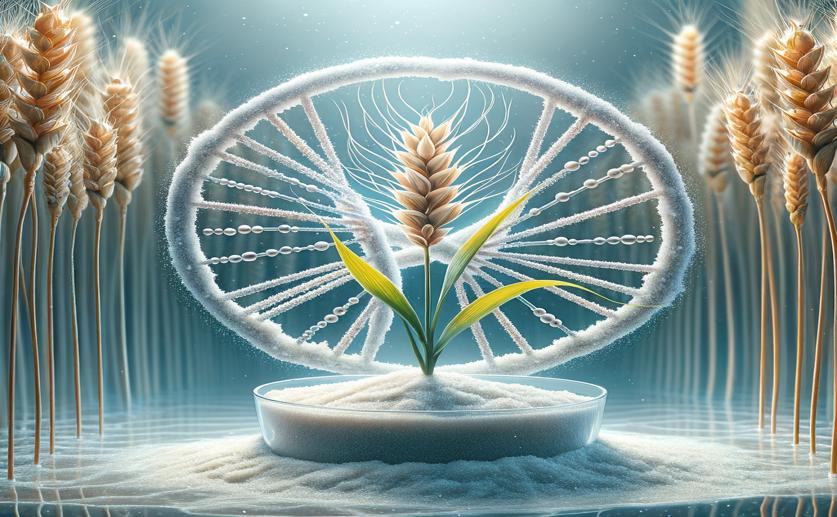
Improving Wheat Salt Tolerance Using Genetic Markers and Kharchia 65
Greg Howard
2nd June, 2024

Image Source: Natural Science News, 2024
Key Findings
- The study was conducted by CCS Haryana Agricultural University to improve wheat's salt tolerance by crossing high-yielding WH1105 with salt-tolerant Kharchia 65
- Progeny from the cross showed significant variations in salt tolerance, with some lines exhibiting improved growth and physiological traits under saline conditions
- Specific genes, including the MYB gene, were identified as crucial for salt tolerance, aiding in the development of wheat varieties that can thrive in saline soils
AgricultureGeneticsPlant Science
References
Main Study
1) Microsatellite marker-assisted backcross breeding for improvement of wheat salt tolerance using Kharchia 65
Published 1st June, 2024
https://doi.org/10.1186/s12864-024-10468-y
Related Studies
2) Comparative physiology of salt and water stress.
Journal: Plant, cell & environment, Issue: Vol 25, Issue 2, Feb 2002
3) Characterization and transformation of TtMYB1 transcription factor from Tritipyrum to improve salt tolerance in wheat.
4) Major genes for Na+ exclusion, Nax1 and Nax2 (wheat HKT1;4 and HKT1;5), decrease Na+ accumulation in bread wheat leaves under saline and waterlogged conditions.



 25th May, 2024 | Jenn Hoskins
25th May, 2024 | Jenn Hoskins